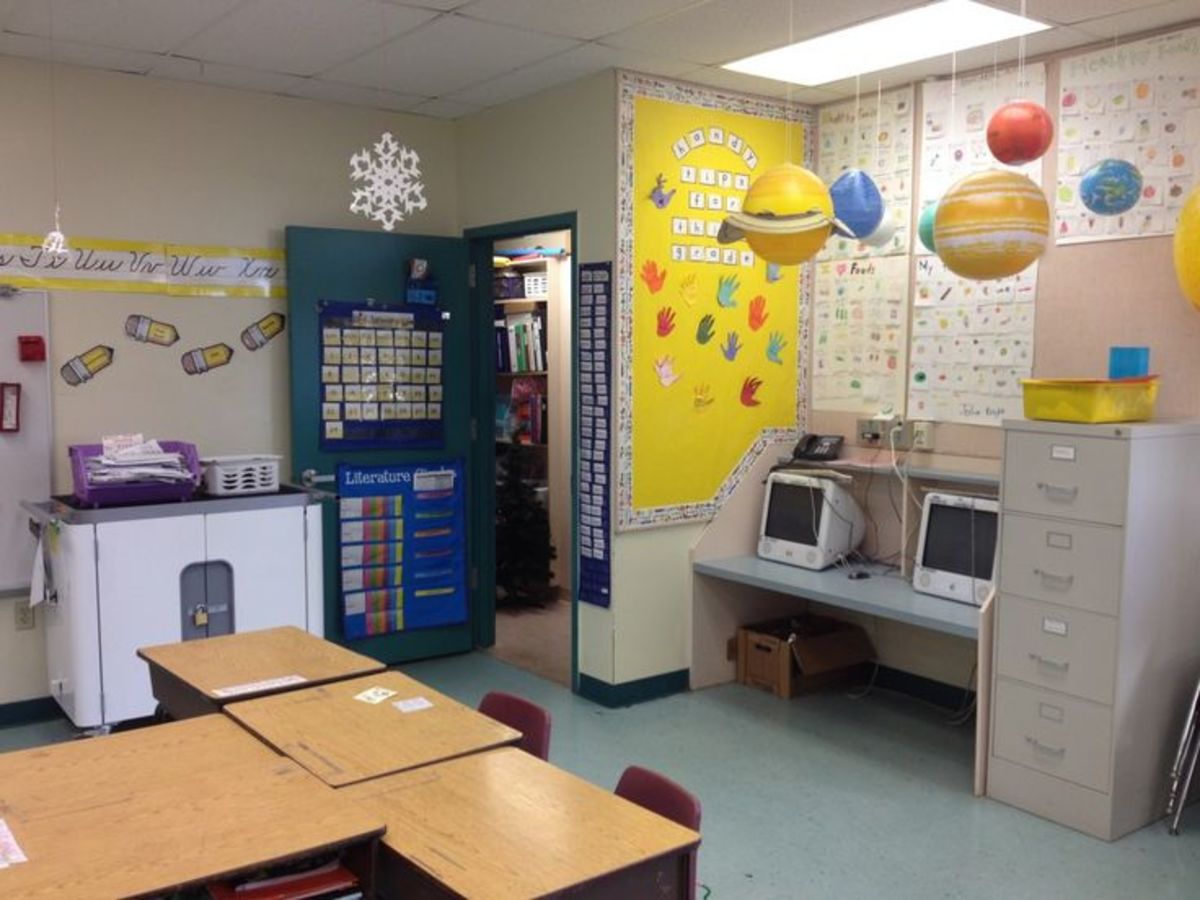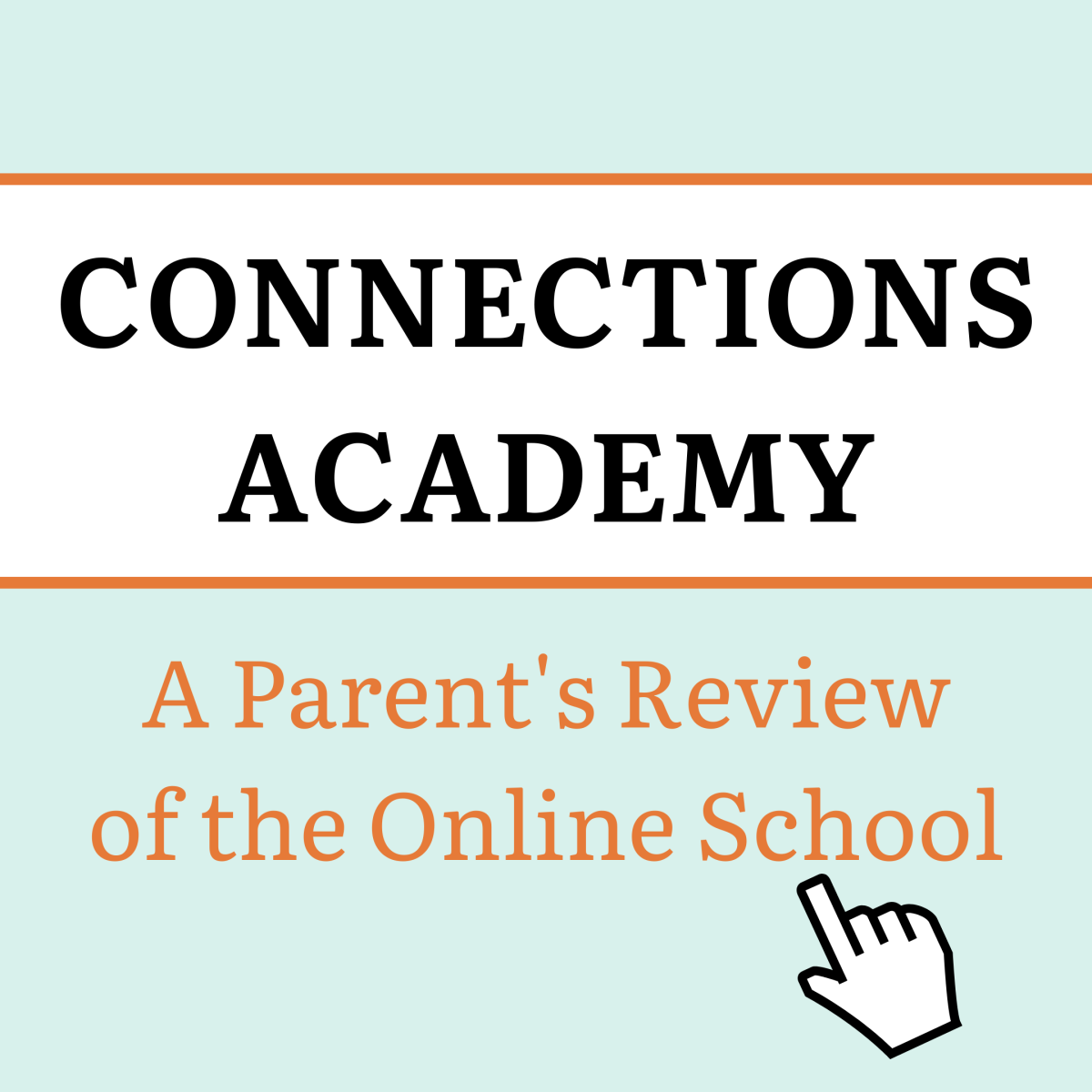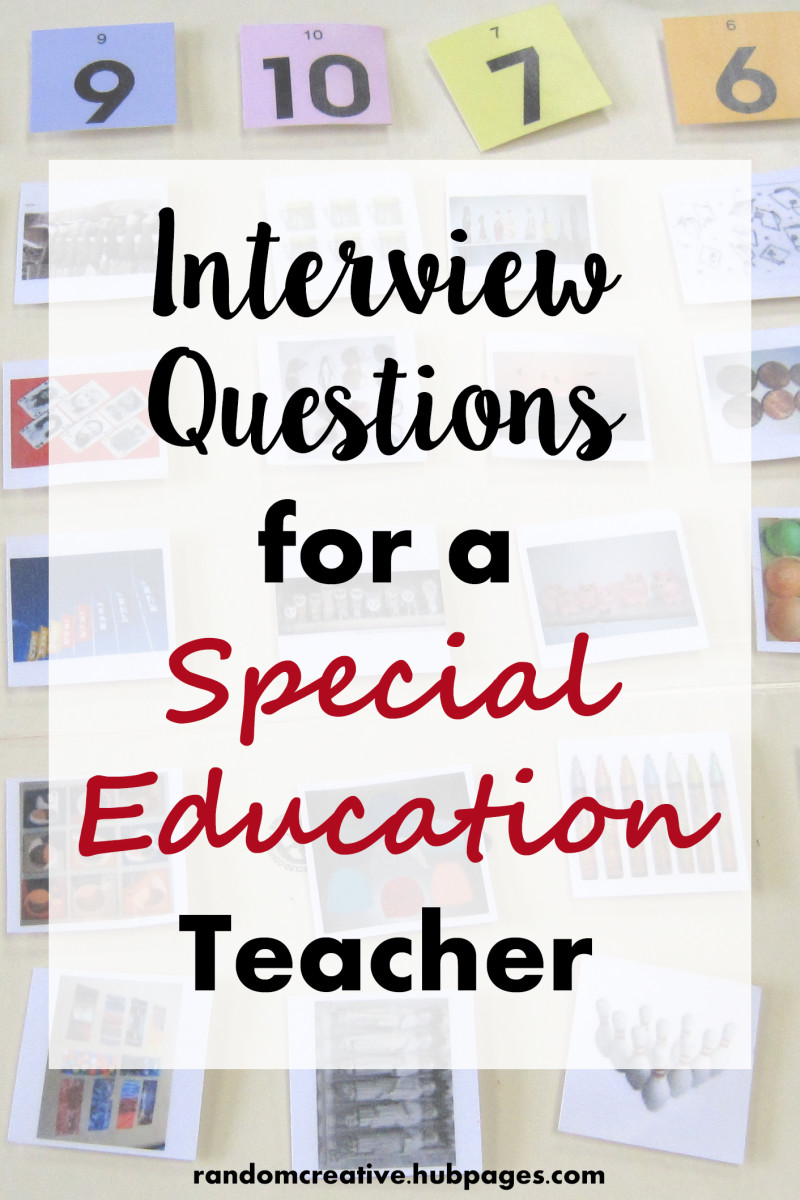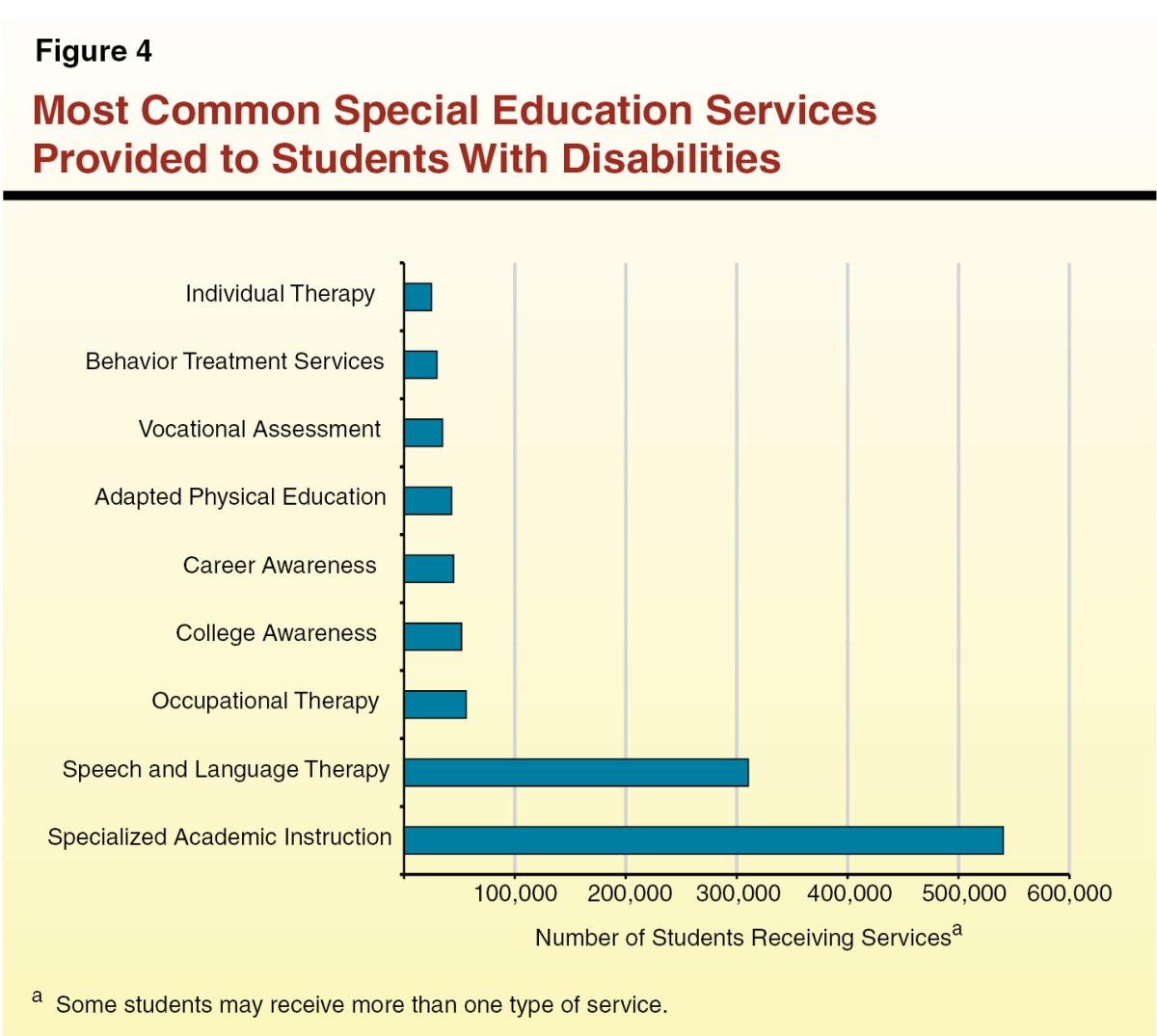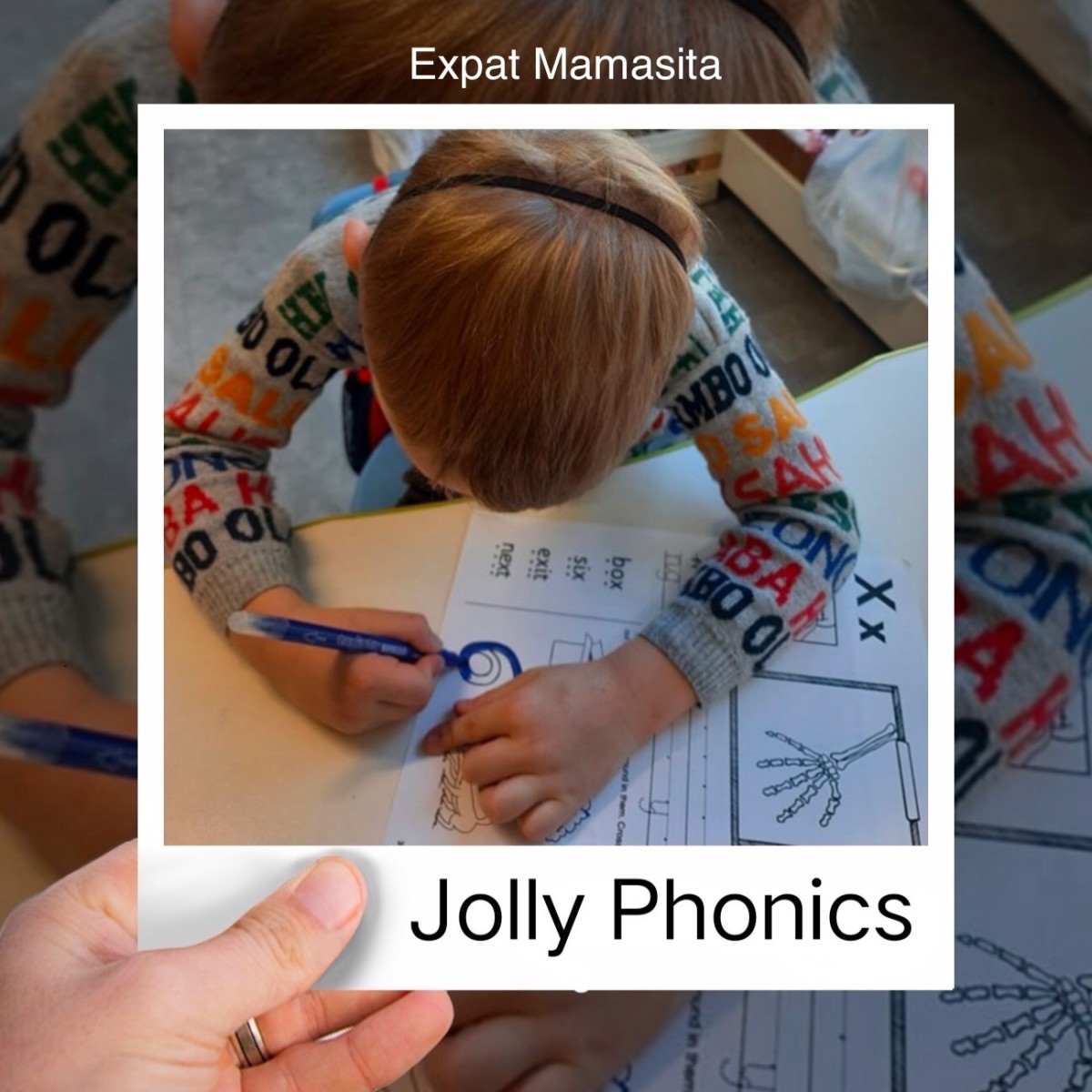A day in a special education classroom
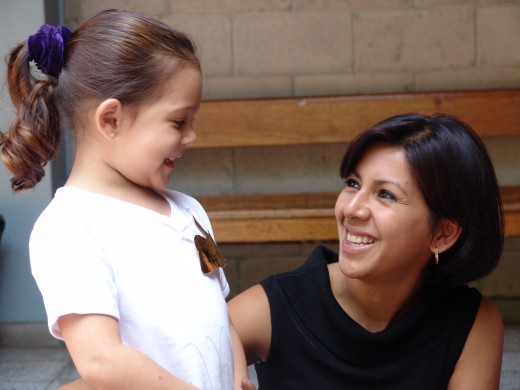
On a foggy Monday at an elementary school on the Central Coast of California, four students sat apart from the general classroom (six students are usually present in the special education classroom, but one was home sick and the other was included in the general classroom for the day). The two classrooms were connected with not even a door to separate them, in order to help all students feel closer to each other and to decrease any feelings of disparity between them. In the special education classroom, the students' individual desks were connected into a U-shape in the middle of the room, with larger tables at each side and behind the group of desks.
A real range of disabilities was represented in the special education classroom, including autism, a learning disability, emotional disturbance, mental retardation, and orthopedic impairment. All of the students were in either first, second, or third grade, and all participated in the general education classroom for at least part of the day (usually for their electives).
Four adults were present in the special education classroom, with Mrs. D as the primary teacher. Ms. W was a student teacher from Cal Poly finishing her master's degree in special education. Ms. C was a member of the Special Children's Intervention Association, working as a classroom aide, as was Maureen Dudley. The student-to-teacher ratio was impressive.
The day's curriculum began with the completion of morning work. Types of work were separated on different sides of their folders. Ms. W was very explicit in giving instructions, and waited patiently for Nathaniel to finish putting his work away. Everyone had to be ready before they moved onto the next task.
The day's schedule was on the board, with each lesson depicted in a picture. Ms. W went down the schedule and picked on different students to identify the activity according to the picture. Also, she explained changes to the schedule, such as Nathaniel going to an occupational therapist later in the day. Having visual supports illustrating such items as a schedule is beneficial, especially for students with autism, because they help clarify abstract concepts and allow students to utilize visual learning strengths (Cohen & Sloan, 2007).
The next activity on the schedule was morning reading at 8:40. Ms. W directed the students bring their chairs to the edge of the red rug to one side of the room, frequently praising them for their performance ("Fabulous. Christian's eyes are facing me, showing me he's ready to learn."). She encouraged students to sit up straight and have their eyes face whatever they were going to think about. Once everyone was seated in a circle at the rug, Ms. W directed the students to greet the person on the right with their right hand, then the person on the left with their left hand. She took the time to correct them if they used the wrong hand, sometimes going to them and showing them which to use. In greeting each other, they politely asked, "Good morning, how are you?" The other student would say, "I'm fine. How are you?"
Following greetings, they began with "polite partners," which were groups of two vowels that appear together in words, such as "oa" in "soap" and "boat." They had been learning about polite partners for the past two weeks. Several examples of words with "oa" were on a small dry erase board, and Ms. W had the "oa" in every word boxed for easy recognition. She had students read and reiterate the words and the sound "oa" repeatedly. Examples of words with the "oa" missing, like "thr_ _t," were on the board, and each student had to come to the board and fill in the missing letters. The letters "oa" were plainly displayed on the board, along with other polite partners to choose from. Ms. W then had students fill in polite partners in the morning announcement read over the Intercom at the day's start, and had them include "sentence stoppers" like exclamation points that they had learned about before. She made sure certain students had what they needed to complete the exercises; for instance, Anthony needed more time, and he also needed her to point out where to fill in the letters.
At 9:00, the students broke into language arts groups at different tables. Mrs. D made sure to explain what they would be working on in their groups. In her group with Zoe and Christian, she had them read words about going to the beach that were on the board. She then asked the students if they had gone to the beach over the weekend, thus connecting schoolwork with their lives. With the reading, Mrs. D discussed "consonant blends," which were groups of consonants at the beginning of words like "gr" in "great." She broke words up into pieces, bringing polite partners back in the lesson, and connected the current lesson with other previous ones ("Remember when we learned about this kind of word?"). She also put the words in context by holding up papers with sentences including the words for the students to read; that way, she could ensure they understood what the word actually meant. The group then opened up their books about the beach to read, stopping for words with consonant blends and any other words that didn't make sense to them.
After 10:00 recess, the students returned for quiet time at 10:15, when they could finish pages in their workbooks from their Browsing Boxes in their desks. The boxes had a good supply of books, writing and drawing utensils, and any other personal items. A picture of a person with a finger to their lips was hung on the board to signal for quiet. Ms. W and Ms. C walked around the desks and made sure students were working on what they needed to and had the opportunity to ask questions.
Meanwhile, Mrs. D pulled Zoe and Anthony aside to have them read with her for a bit. She then brought them back to their desks for handwriting groups at 10:30. The group of Ms. W, Zoe, and Christian worked on capital letters and numbers. Using a dry erase board, she had them practice the figures by using birthdays and holidays. She also pointed out sentence stoppers again. At one point, Christian was clearly frustrated, and Ms. W responded calmly.
Mrs. D worked with Anthony separately because he needed extra practice with certain numbers. She had him practice the number 2 with a magnetic tool that figures could be written on and erased easily. She tried to explain how to create the number by comparing it to walking along a path.
Finally, math was at 10:50, followed by lunch, music, arts and crafts, and departure. Conclusion
The shorter lengths of activities seemed positive because the students never seemed to get bored. I definitely noticed that with every activity new or old, the teachers explained to the students what they would be working on that part of the day, as well as how the activity related to what they have been learning and why they needed to know it. Children with autism greatly resist change and may act inappropriately in response to a small change in routine (Brooks, Marshall & Fraser, 2004). Thus, it's best for students to provide structure, make parts of the curriculum predictable, and announce any changes beforehand.
I was impressed with the resources available in the room, especially those on the wall to reference at any time. There was a poster about how to work through hard words, as well as one on why students should read. The alphabet and numbers up to 100 were posted near the ceiling; I saw Zoe refer to the alphabet at least once during the morning. A poster with classroom rules clearly delineated hung on the wall.
Separate groups for each activity seemed practical; oftentimes, it appeared that students were grouped by level and capability in each activity.
The students were so polite and well behaved; they made the teachers' jobs look so easy! They helped each other if one dropped a paper, or if another needed to borrow a crayon. The teachers were constantly smiling, and the classroom environment looked so pleasant and enriching. I saw the positive results of patience and positive reinforcement; Ms. W was especially good about thanking students for their efforts. The students seemed to respond well and pay attention, though at times the lure of a pocket zipper and long hair was too much to resist.
Furthermore, in speaking with Mrs. D during recess, I learned that for students with autism, she tries to incorporate more "social instruction," which she referred to as the missing piece in the general curriculum. She would put students in social groups for "social thinking" and understanding the perspectives of others. Speech and language pathologists were brought in the classroom sometimes as well. Also, students had "recess buddies," which were like mentors to play and help facilitate interaction.

